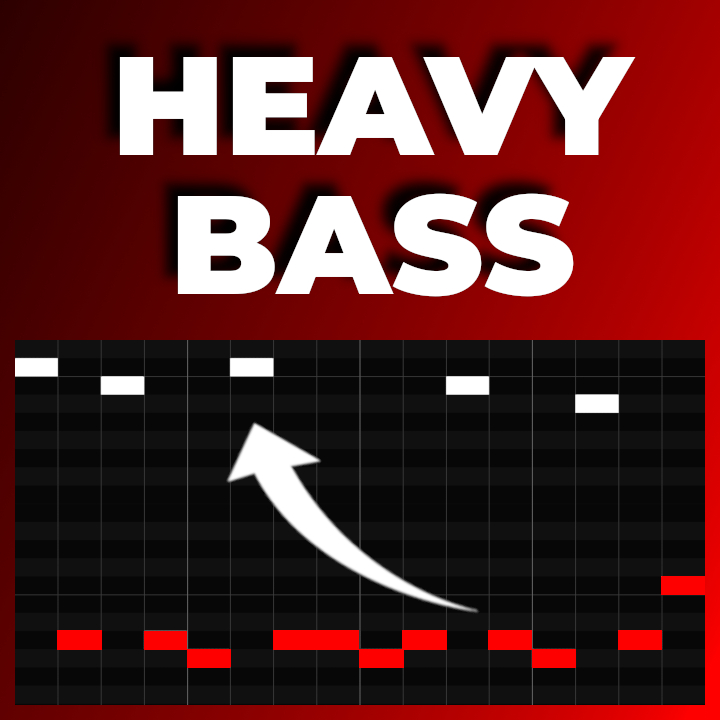How to Write Heavy BASS Lines • Music Theory from Front Line Assembly "Purge"
Description
How to Write Heavy BASS Lines
Step 1. Syncopated Octaves
Set up one bar of 4|4 with your grid on 1/16 notes, and your tempo at 110 BPM. You’re gonna start by using only one note, and the octave of that note. We’re using A in our example. So, draw in every 1/16 note on the low A. Now, play around with moving a handful of them one octave up.
These high notes will make accents in your bass line, so you want them to create a cool rhythm all on their own. And one of the best ways to do that is to syncopate most of them. In other words, most of them will not be on the main beats. All that syncopation adds tons of energy!
Step 2. High Line
Your bass line actually consists of two lines now: a high line, and a low line. So in this step you’re gonna add a melodic element to your high line. A great note to start on is the ♭3 (which is C in our example), as it’s super strong and moody! And by the way, if these flats and numbers confuse you, no problem, just read hack 8 in our free book (link below).
Right, so what other notes should you use in your high line? Well, as we’re writing a heavy bass line, you wanna crank up the dissonance, so throw in a ♭2 somewhere (which is B♭ in our example). And if you use the ♭3 and the ♭2, then you could also use the 2, which is the note in between. And feel free to repeat notes. In our example, we played the ♭3 twice, the 2 twice, and the ♭2 once. And a shoutout to local Vancouver BC legends Front Line Assembly, as this lesson is based on the song “Purge” from their 2021 album “Mechanical Soul”.
Free Book
Also, are you new to music theory? Or are you experienced, but you want a refresher? Then download our FREE BOOK (link opens in new tab). It only takes 30 minutes to read, then you’ll have a solid theory foundation that you can instantly apply to your songwriting and producing.
Step 3. Low Line
So as you could hear, the bass line is already sounding good. And to be honest, most producers would think it’s now complete, but not Front Line Assembly! No, they’ve got one more trick up their sleeves, and that’s the dissonance they add to their low line.
Most of their low line remains on the root note, however, they’ve moved a few notes down one semitone to the 7 (which is G♯ in our example). Also, at the very end, you could throw in a ♭3 for a little variation. This makes the bass line loop more smoothly as well.
Adding this dissonance to your low line is a game-changer, as it’s super subtle (seriously, most people won’t even notice it), but it adds a feeling of heaviness that you simply can’t achieve without it!
PODCAST
Listen below, or on any podcast app.

























